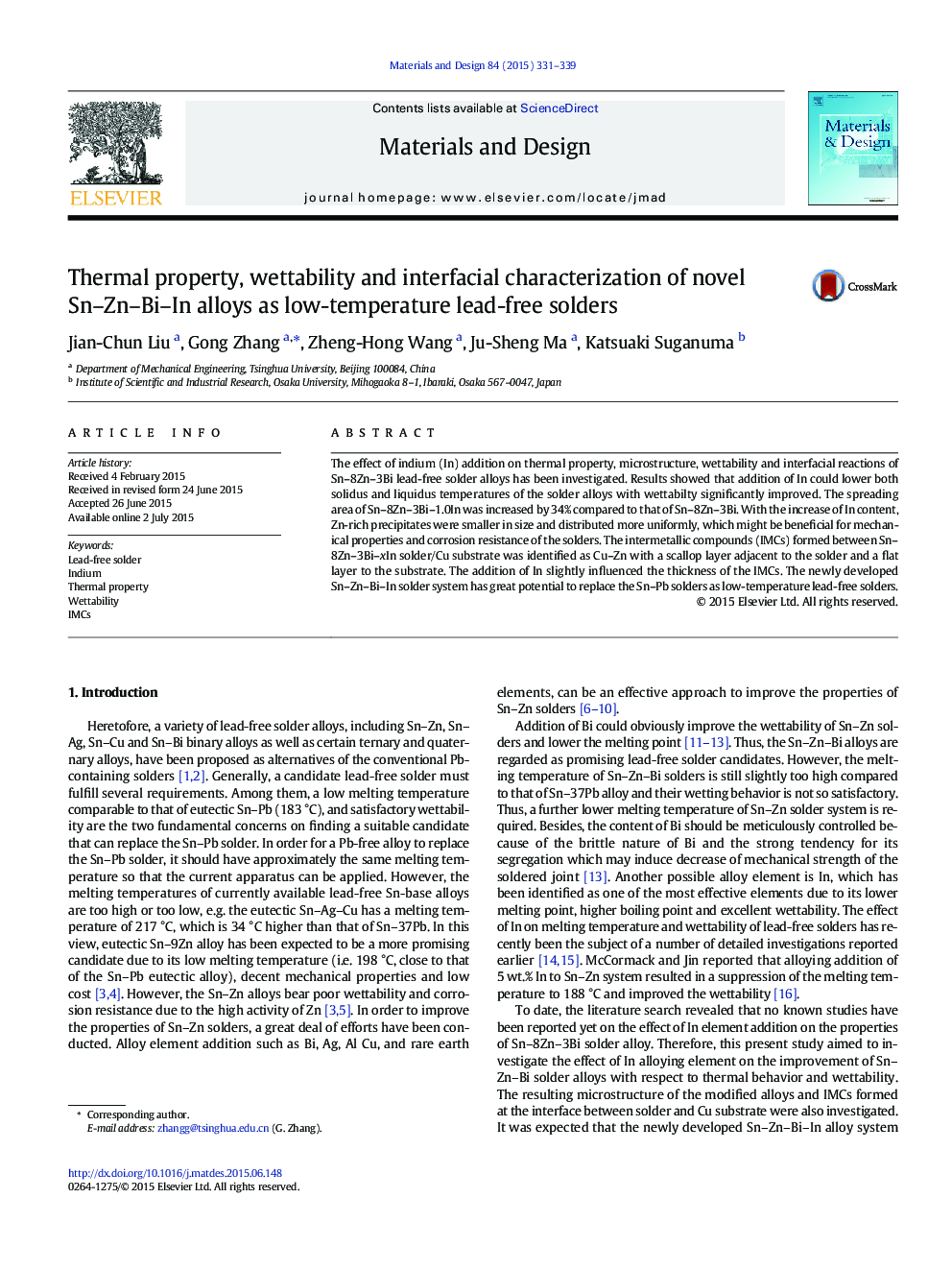| Article ID | Journal | Published Year | Pages | File Type |
|---|---|---|---|---|
| 828252 | Materials & Design | 2015 | 9 Pages |
•Zn-rich precipitates were refined and distributed more uniformly by adding In.•Melting temperature of Sn–Zn–Bi–In solder was decreased by adding In.•Wettability of Sn–Zn–Bi–In solder was significantly improved by adding In.•Addition of In slightly influenced the IMCs at the as-soldered Sn–Zn–Bi–In/Cu interface.•Sn–Zn–Bi–In alloy is considered as a promising low-temperature lead-free solder.
The effect of indium (In) addition on thermal property, microstructure, wettability and interfacial reactions of Sn–8Zn–3Bi lead-free solder alloys has been investigated. Results showed that addition of In could lower both solidus and liquidus temperatures of the solder alloys with wettabilty significantly improved. The spreading area of Sn–8Zn–3Bi–1.0In was increased by 34% compared to that of Sn–8Zn–3Bi. With the increase of In content, Zn-rich precipitates were smaller in size and distributed more uniformly, which might be beneficial for mechanical properties and corrosion resistance of the solders. The intermetallic compounds (IMCs) formed between Sn–8Zn–3Bi–xIn solder/Cu substrate was identified as Cu–Zn with a scallop layer adjacent to the solder and a flat layer to the substrate. The addition of In slightly influenced the thickness of the IMCs. The newly developed Sn–Zn–Bi–In solder system has great potential to replace the Sn–Pb solders as low-temperature lead-free solders.
Graphical abstractFigure optionsDownload full-size imageDownload as PowerPoint slide
